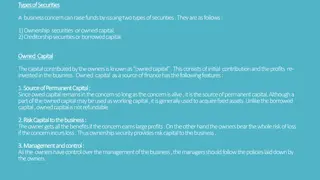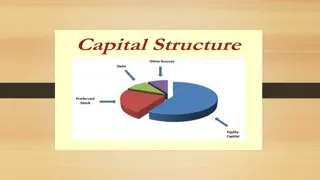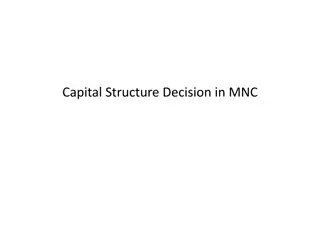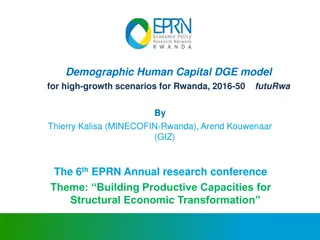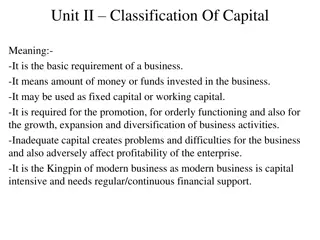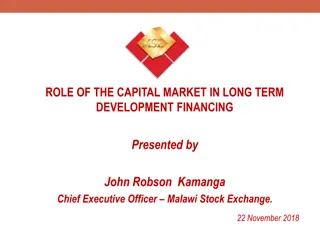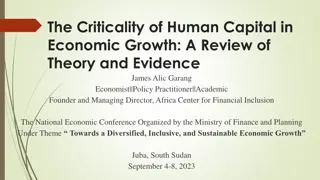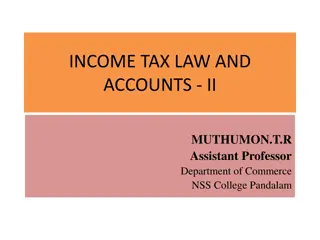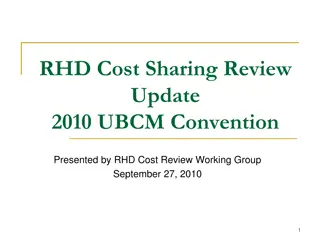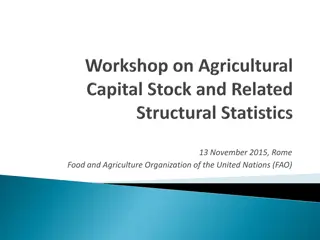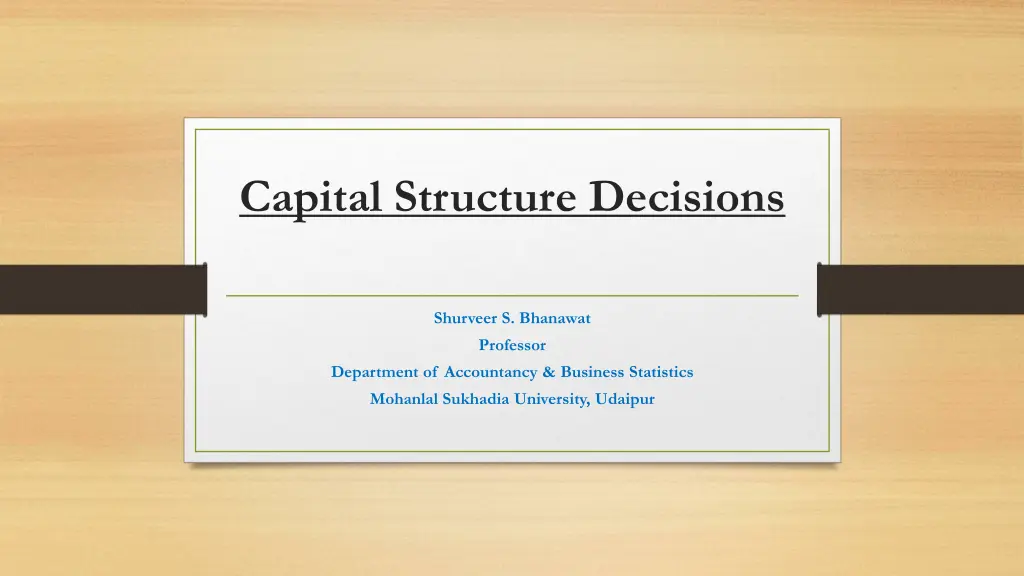
Understanding Capital Structure Decisions for Tax Planning
Explore how optimizing capital structure can maximize asset value, minimize cost of capital, and balance risk, cost, control, and tax considerations. Learn about tax implications for dividends, interest, financing costs, and corporate taxation through insightful case studies and examples.
Download Presentation

Please find below an Image/Link to download the presentation.
The content on the website is provided AS IS for your information and personal use only. It may not be sold, licensed, or shared on other websites without obtaining consent from the author. If you encounter any issues during the download, it is possible that the publisher has removed the file from their server.
You are allowed to download the files provided on this website for personal or commercial use, subject to the condition that they are used lawfully. All files are the property of their respective owners.
The content on the website is provided AS IS for your information and personal use only. It may not be sold, licensed, or shared on other websites without obtaining consent from the author.
E N D
Presentation Transcript
Capital Structure Decisions Shurveer S. Bhanawat Professor Department of Accountancy & Business Statistics Mohanlal Sukhadia University, Udaipur
An optimum capital structure Maximizes the value of the assets of the company Wealth of its owner Minimises the cost of capital The Tax planner should properly balance risk, cost, control and tax consideration
Income Tax Act dividend on shares is not deductible while interest paid on borrowed capital is allowed as deduction under section 36(1)(iii) Cost of raising finance through borrowings is deductible in the year in which it is incurred. Cost of issue of shares is allowed as deduction in five years under section 35D Because of the aforesaid provisions, corporate taxation plays an important role to determining the choice between different source of financing.
35D:Amortisation of Preliminary Expenses Expenses in connection with the public issue of share or debenture of a company, underwriting commission, brokerage and charges for drafting, typing , printing and advertisement of the prospectus are allowed under this section
35D:Amortisation of Preliminary Expenses 5% of cost of project OR Whichever is more 5% of capital employed OR Qualifying Expenditure Actual Expenditure Amount of deduction : Qualifying expenditure allowed as deduction in five equal years
Case Study Tuktak ltd is a widely-held company. It is currently considering a major expansion of its production facilities and the following alternatives are available: Particulars Alterntive-1 Alternative-2 Alternative-3 Share capital 5,00,00,000 2,00,00,000 1,00,00,000 14% Debentures - 2,00,00,000 1,50,00,000 18% loan from Banks - 1,00,00,000 2,50,00,000
Case Study Cont. . Expected rate of return before tax is 25%. The rate of dividend of the company since 1990 is not less than 20% and the date of dividend declaration is June 30 every year. Suggest which alternative is the best for the Tuktak ltd for the tax point of view?
Particulars Alterntive-1 Alternative-2 Alternative-3 Return on 5 Crore 1,25,00,000 1,25,00,000 1,25,00,000 Less: Interest on debenture Nil 28,00,000 (14% of 2 crore) 18,00,000 21,00,000 Less Interest on Loan Nil 45,00,000 Taxable Profit (A) 1,25,00,000 79,00,000 59,00,000 Tax@30% Add surcharge 7% Total Health & Education cess 4% Total Tax Payable (B) 37,50,000 2,62500 40,12,500 1,60,500 41,73,000 23,70,000 nil 23,70,000 94800 24,64,800 17,70,000 Nil 17,70,000 70,800 18,40,800 Earning available to equity shareholders before dividend tax(A-B) Rate of return on equity share capital 83,27,000 54,35,200 40,59,200 83,27,000/5,00,00,000*100 27.18% 40.59% 16.65%








